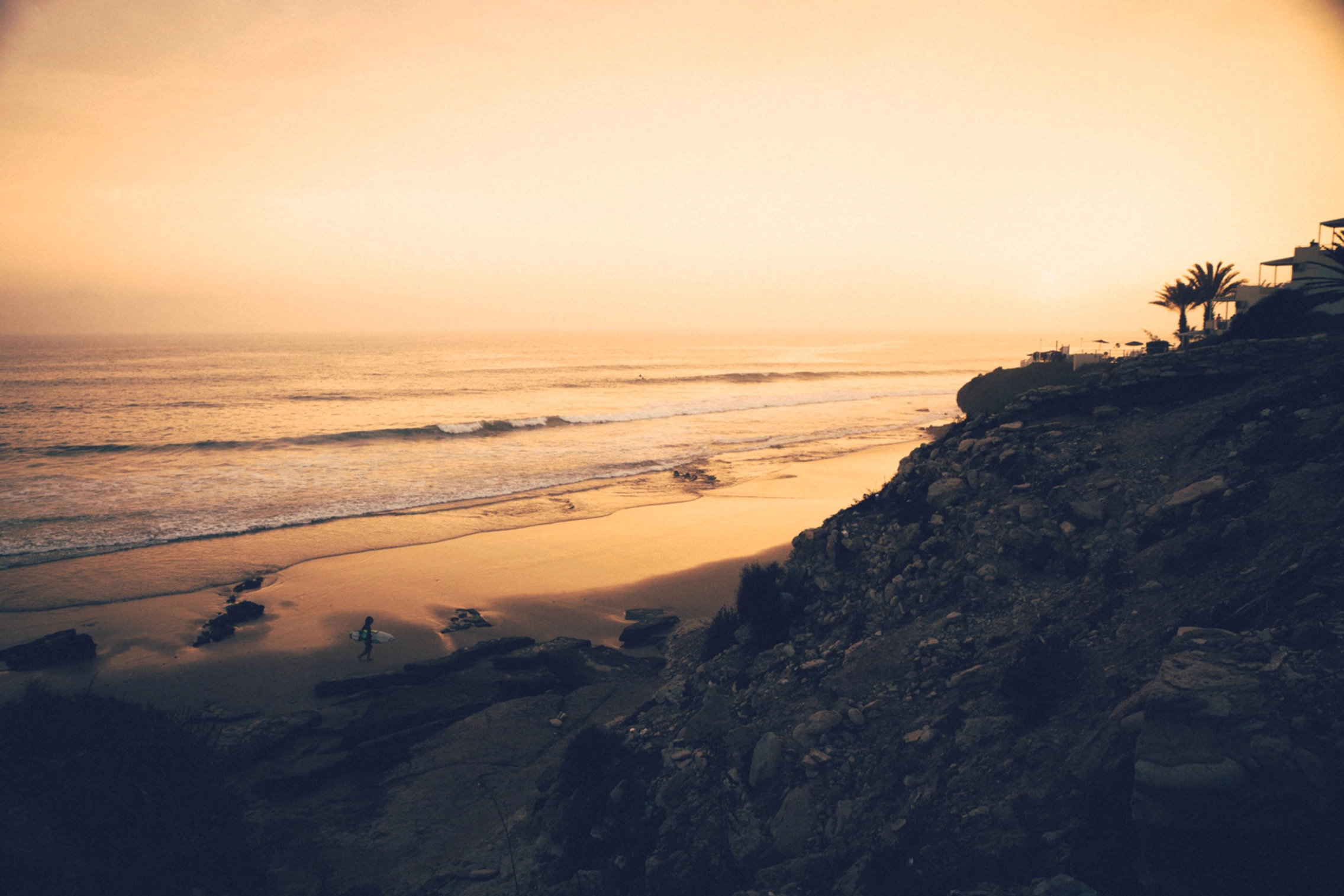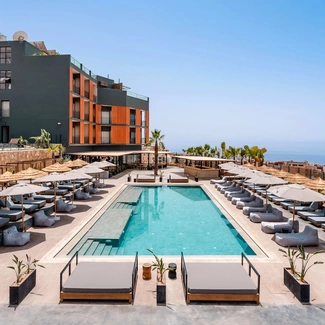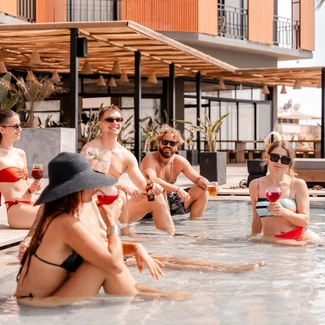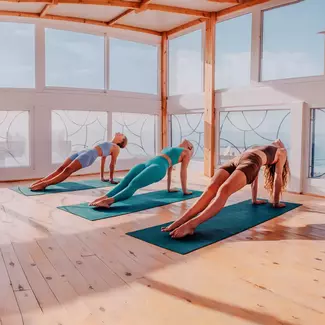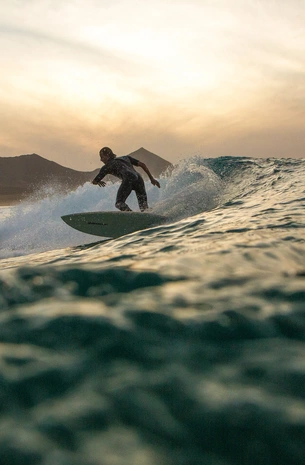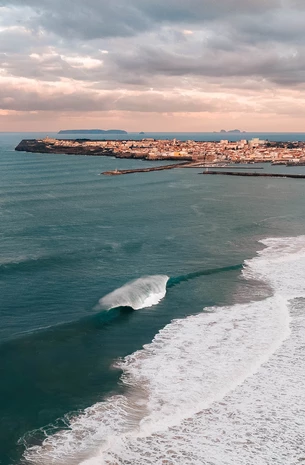Simon Fitz
Fotograf Simon ist ein fester Bestandteil des Pure Media Teams, wenn er nicht gerade in Indo unterwegs ist findet ihr ihn im Puresurfcamp MolietsErstellt am: 15.08.2025
Deep in the heart of North Africa lies a small fishing village called Taghazout, just north of Agadir, which comes to life every winter. That’s when the winter swells return and the roar of thundering point breaks magically draws surfers from all over the world to Morocco.
When it’s freezing cold at home and the Christmas stress kicks in, the surf spots in Morocco are at their best. Grab your board and set off on a surf adventure in the Orient, straight out of a thousand and one nights. In the 1960s, Taghazout was a hideaway for hippies and dropouts – today, the Banana Village is every surfer’s dream destination.
Hop on a plane and just four hours later you’ll find yourself in a different world, shaped by Arabic influences, colorful spices, and warm hospitality. In this surf guide, you’ll learn when and where to find the best waves in Morocco, what makes a great surf camp there, and why your next surf holiday should be heading straight to this coastline.
Overview
Why Surfing in Morocco Is So Special
Few other countries combine warm winter water temperatures with reliable swell, oriental charm, and a deeply rooted surf scene quite like Morocco. Between Agadir and Imsouane, world-famous surf spots sit alongside charming villages and modern surf camps. And the best part: from October to March, the Moroccan Atlantic coast regularly delivers solid groundswells.
Reasons for a Surf Holiday in Morocco:
- Perfect surf conditions: Surfing in Morocco means having 10 great spots within easy reach of Taghazout – from the reef break at Killers to the beach break at Banana Beach, there’s something for every surfer. If you’re into windsurfing or kitesurfing, be sure to head to Essaouira. Especially in summer, the wind really cranks there.
- Oriental adventures straight out of 1001 Nights: Immerse yourself in the exotic world of the Orient. Experience the vibrant bustle of Moroccan markets, the scent of spices, and the tea culture. Sample oriental delicacies, ride a camel through the desert, and soak up the surf scene in Banana Village. Morocco means mint tea, colorful bazaars, magnificent mosques, and unforgettable cultural encounters!
- Quick travel: From Munich, you can be in Agadir in just four hours – right on the coast. From there, it’s only 20 minutes to Taghazout.
- Budget-friendly: Starting from just €309, you can spend 7 surf days at the Pure Surf Camp Morocco in Aourir, near the surf town of Taghazout. Add on surf lessons or guiding, or simply head out on your own in search of your perfect wave.
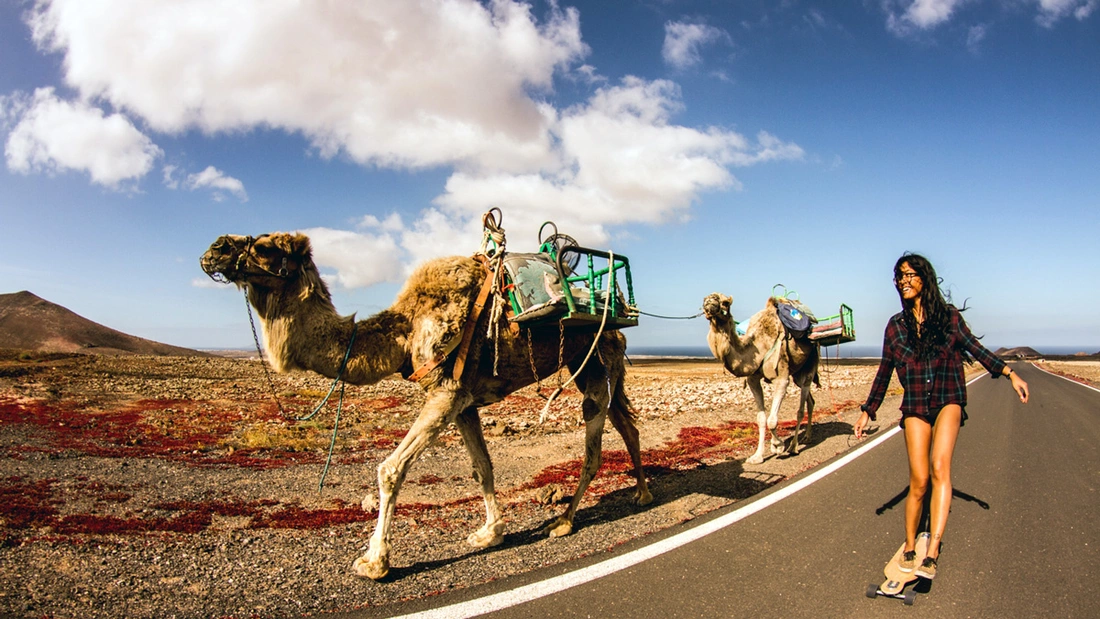
Surf Guide
The Best Surf Spots in Morocco
Morocco offers an impressive variety of surf spots – from mellow beach breaks and long, cruisy point breaks to powerful reef breaks for advanced surfers. Along the Atlantic coast between Agadir, Taghazout, and Imsouane, you’ll find waves for every level and every mood.
In Aourir and Tamraght, you’ll find relaxed conditions for beginners with direct access to spots like Banana Point and Devil’s Rock. Around Taghazout, the heart of Morocco’s surf scene beats strong: world-class waves like Anchor Point, Panoramas, and Hash Point line up one after the other. And if you’re into super-long, laid-back rides, head to Imsouane – home to the legendary Bay and the punchy peaks of Cathedral Point.
This guide gives you all the key surf spots – clearly organized by region, with tips on swell, tide, and access. That way, you can plan your surf trip perfectly – whether you’re standing on a board for the first time or already hunting for your next barrel.
Surf Spots in Morocco
Agadir & Area – Gentle Beach Breaks and Ideal for Beginners
Surf Spot in Morocco
Banana Point (Aourir)
Banana Point is a relaxed yet surprisingly versatile right-hand point break right on the edge of Aourir – the “Banana Village,” named after the surrounding plantations. The wave peels from the rocky headland to the river mouth and is especially popular with longboarders and intermediates. It breaks over sand with a few scattered rock plates, works on all tides, and offers waist- to shoulder-high waves. The spot handles northwest swells and benefits from light ENE winds – mornings often deliver perfect lines here.
Whether it’s take-off practice or cruisy turns, Banana Point is a true all-round wave with a mellow vibe. Access is easy on foot from Aourir or Tamraght. Parking is available on the hill above the spot. After your session, it’s worth heading into the village: fresh tajines and traditional Moroccan mint tea await.
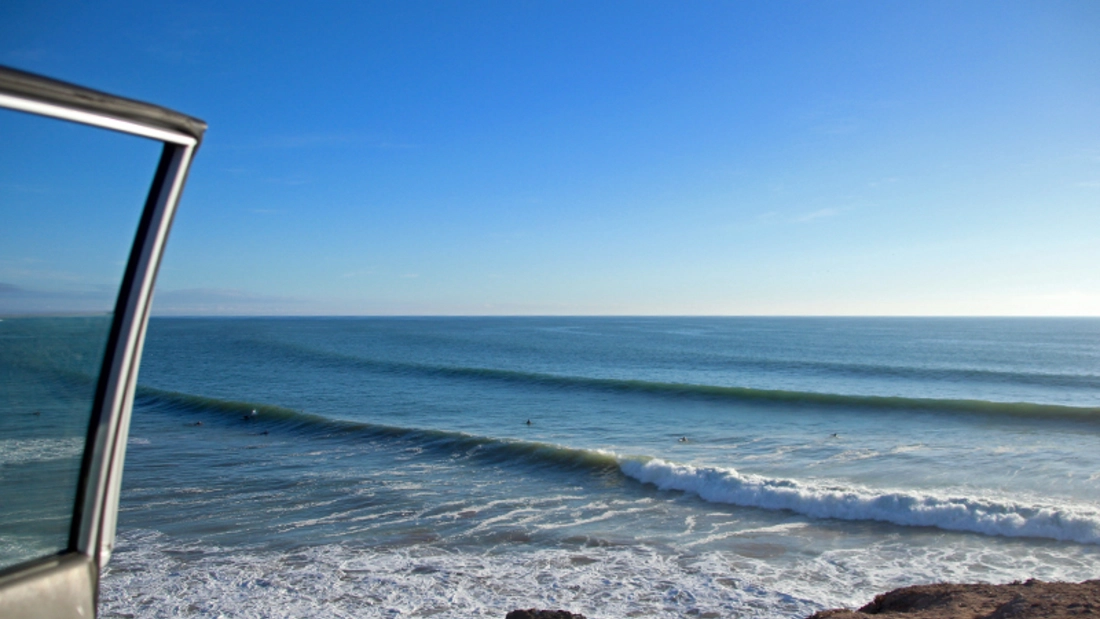
Surf Spot in Morocco
Devil’s Rock (bei Taghazout)
Devil’s Rock is one of the most popular surf spots south of Taghazout – and for good reason. This sandy beach break sits directly below a striking rock formation and offers plenty of fun for both beginners and more advanced surfers. The wave predominantly breaks to the left but can also offer mellow rights depending on the sandbank. The spot works best at mid tide with a northwest swell, and the ideal wind is from the northeast (offshore).
Thanks to its easy access, Devil’s Rock is a favorite with surf schools. From the surrounding camps in Tamraght or Aourir, you can reach the spot on foot or in just a few minutes by car. After your session, it’s worth taking a stroll through the village or enjoying a sundowner with ocean views at the beach café.
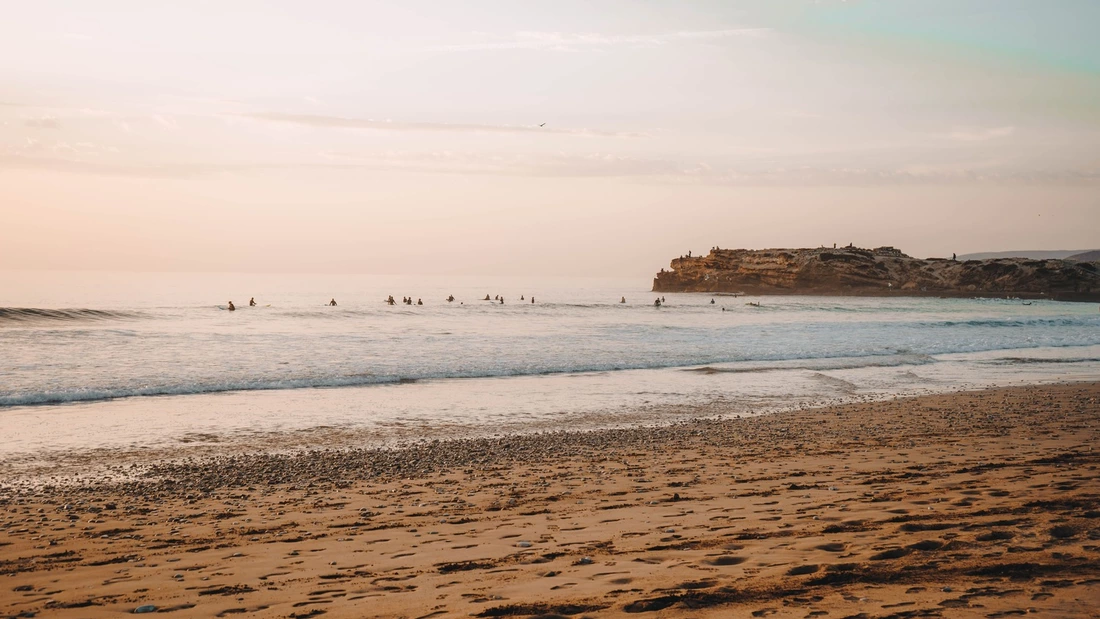
Surf Spots in Morocco
Taghazout – Morocco’s Surf Mecca
Surf Spot in Morocco
Anchor Point
Anchor Point is Morocco’s most legendary wave – a long, powerful right-hand point break that peels along a rock shelf and, in optimal conditions, delivers world-class surf sessions. The wave offers fast sections, clean walls, and occasionally hollow sections for barrel hunters. On big winter days, Anchor shows its full potential – and draws a corresponding crowd.
The entry is easy to find, but in larger swells it can be physically demanding due to currents and rocks in the line-up. Anyone paddling out here should be confident in their paddling and board control – it’s definitely a spot for experienced surfers. The best conditions come with a northwest swell and offshore winds from the east. Anchor Point works particularly well between September and March, at mid to high tide.

Surf Spot in Morocco
Panoramas (Taghazout)
Panoramas (also known as Panorama Point) is a long, consistently breaking surf spot right on the southern edge of Taghazout – perfect if you’re learning to surf or want to catch your first green waves. The wave breaks to the right and, on good days, can run for up to 100 metres. It changes with the tides: at low tide it’s faster and more challenging, at high tide it becomes softer and easier to ride – ideal for beginners.
The bottom is sandy, making entry safe and comfortable. The spot works best with a swell from the north to northwest and light northeast winds – often exactly the conditions you’ll find during Morocco’s main surf season. Access is simple: you can walk straight from the village to the beach, and getting into the water is straightforward.
The line-up vibe is usually relaxed and friendly. Panoramas isn’t as crowded as Anchor Point, but it’s still popular – especially with surf schools and longboarders.
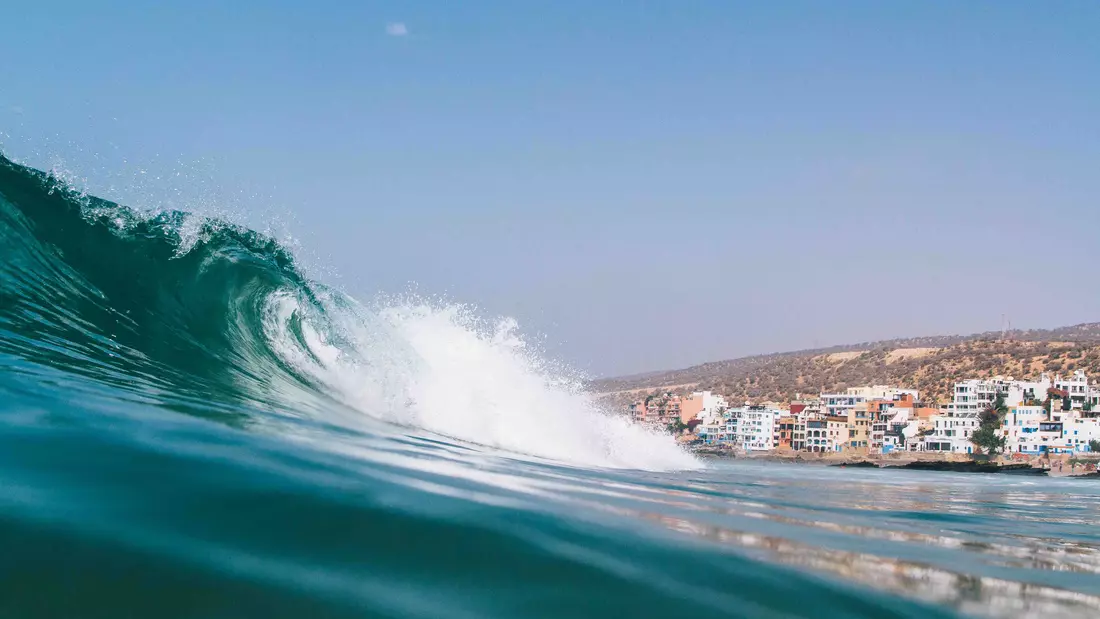
Surf Spot in Morocco
Hash Point
Hash Point sits right in the middle of Taghazout – meaning you can stroll to the spot straight after breakfast. The wave is a mellow right-hander that breaks over a mix of rock and sand. On small swells, it’s very beginner-friendly; on bigger swells, it picks up speed and can offer longer rides.
Hash Point works best in winter, especially at low tide, with a northwest swell and light offshore winds from the northeast. The wave isn’t particularly powerful, making it perfect for getting comfortable in green waves. However, it’s a bit inconsistent – sometimes too small, sometimes just right.
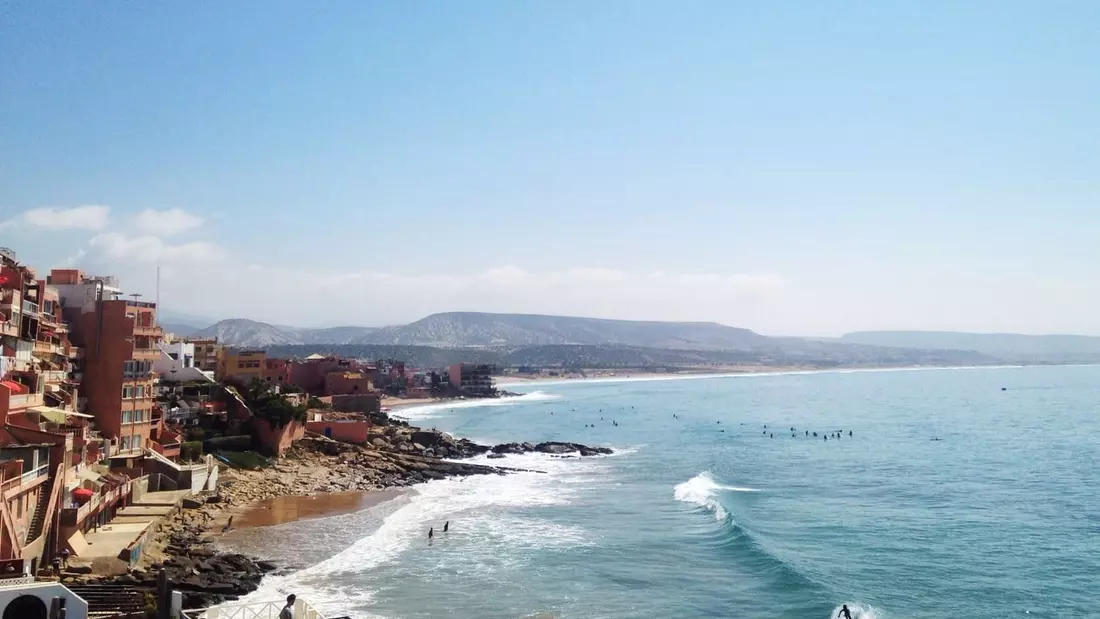
Surf Spots in Morocco
Killer Point (North of Taghazout)
Killer Point is an impressive point break that delivers excellent waves in bigger swells – long, powerful, and sometimes barreling. This makes it more of a spot for experienced surfers. The name sounds intimidating, but it actually comes from the occasional sighting of dolphins (“killer whales”), not from the wave itself.
The wave works at all tides and is best with a northwest swell and easterly winds. Killer Point is surprisingly uncrowded – probably because the entry over the rocks and the paddle-out are both fairly long and demanding.
Killer Point (Google Maps) | Surf Forecast (surf-forecast.com)

Surf Spots in Morocco
Imsouane – Morocco’s Longboard Paradise
Surf Spots in Morocco
The Bay (La Baie)
“The Bay” in Imsouane is home to one of the longest waves in Morocco – on the right day you can ride for over 500 meters! It’s mellow, consistent, and perfect whether you’re learning to surf, cruising on a longboard, or catching lines on a soft-top. Intermediates will also love it – especially with a fish or funboard.
Best conditions are at low to mid tide, with swell from the northwest to southwest and winds from the northeast. The vibe in the water is friendly, but the spot can get very crowded – especially in peak season.
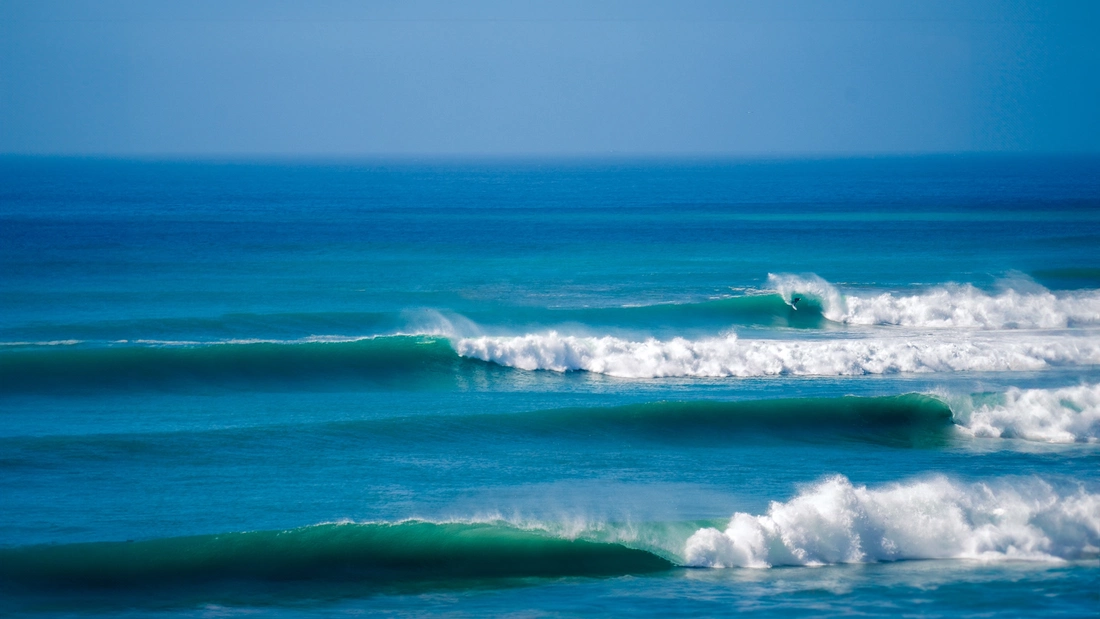
Surf Spots in Morocco
Cathedral Point (Imsouane)
Cathedral Point sits on the opposite side of Imsouane Bay and packs a lot more punch than The Bay. Waves break over a mix of sand and rock, mostly left-handers with the occasional right. They’re shorter but steeper and faster – a true spot for advanced surfers or confident intermediates.
Cathedral works in almost all swell sizes, but it’s at its best with a northwest swell and offshore winds from the east. Despite its quality, the lineup is often quiet – perfect for escaping the crowds at The Bay.
Cathedral Point (Google Maps) | Surf Forecast (surf-forecast.com)
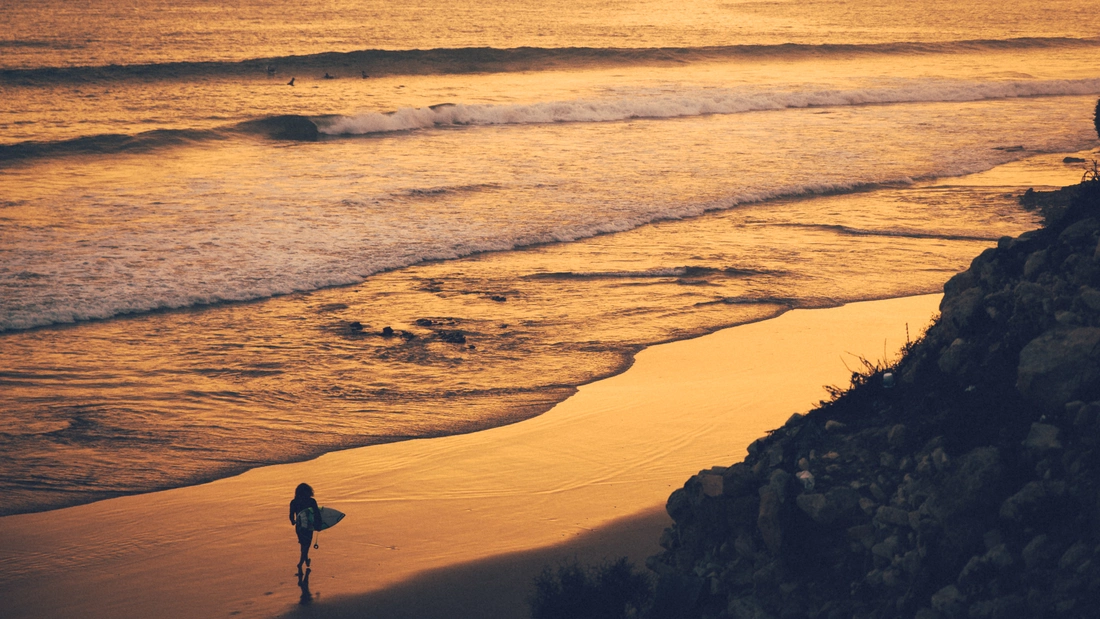
Surf seasons in Morocco
When is the best time to surf in Morocco?
Spring: March – May
Spring is particularly suitable in Morocco for a surf trip: temperatures are rising, the climate is pleasantly mild, the spots are not yet crowded. Swells come regularly from the northwest and ensure consistent conditions – ideal for beginners and intermediates. Especially in March, Morocco shows its best side with reliable swell, empty line-ups and moderate wind. A 3/2 mm wetsuit is usually sufficient., the climate is pleasantly mild, the spots are not yet crowded. Swells come regularly from the northwest and ensure consistent conditions – ideal for beginners and intermediates. A 3/2 mm wetsuit is usually sufficient.
Summer: June – August
Surfing in Morocco in August? Absolutely possible – if you’re looking for relaxed sessions in the sun. The swells are smaller, but that makes the conditions ideal for beginners and surf lessons. The water is pleasantly warm; in the more southern regions, a shorty or Lycra is often enough. During this time it’s more about relaxed surfing with a holiday vibe and long days by the sea.. The surf conditions are calmer – ideal for beginners and surf lessons. The water is pleasantly warm; in the more southern regions, a shorty or Lycra is often enough. During this time it’s more about relaxed surfing with a holiday vibe.
Autumn: September – November
Now the prime time begins: the first big swells hit the coast, and temperatures remain summery. Many spots work reliably, and the water is still warm. A 3/2 mm wetsuit is usually enough. Best time for intermediates and advanced surfers.
Winter: December – February
The best season for experienced surfers. Powerful Atlantic swells regularly reach the Moroccan coast. Mild climate (15–22 °C), empty line-ups and perfect conditions at the point breaks. A 4/3 mm wetsuit is recommended – often even without booties.
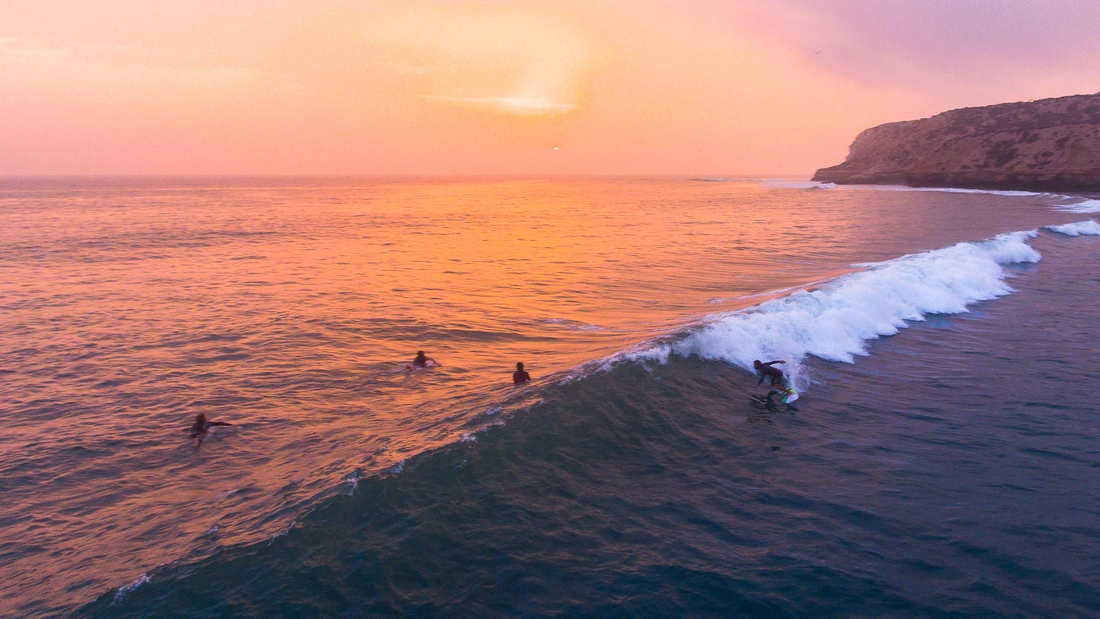
Surf Forecast Morocco
Swell, Wind & Tide on Morocco’s Atlantic Coast
The Moroccan Atlantic coast faces west and regularly receives groundswells from the North Atlantic – especially from October to March. These swells provide consistent conditions at the many point breaks around Taghazout, Imsouane, and Agadir.
Swell: Northwesterly swells bring the most reliable waves. At 3–6 feet (around 1–2 meters), many spots work perfectly – especially point breaks like Anchor Point or La Bay. More southerly spots also work well with smaller swell.
Wind: Mornings are usually calm or see a light offshore breeze – perfect for glassy conditions. From midday, onshore winds often set in, which is why many sessions start early. In summer, thermal northerlies can become stronger.
Tide: Many spots along the Moroccan coast work best at mid to high tide. Reef or point breaks such as Anchor Point, Hash Point, or Cathedral Point reach their full potential then. Beach breaks like Devil’s Rock often work well even at low tide.
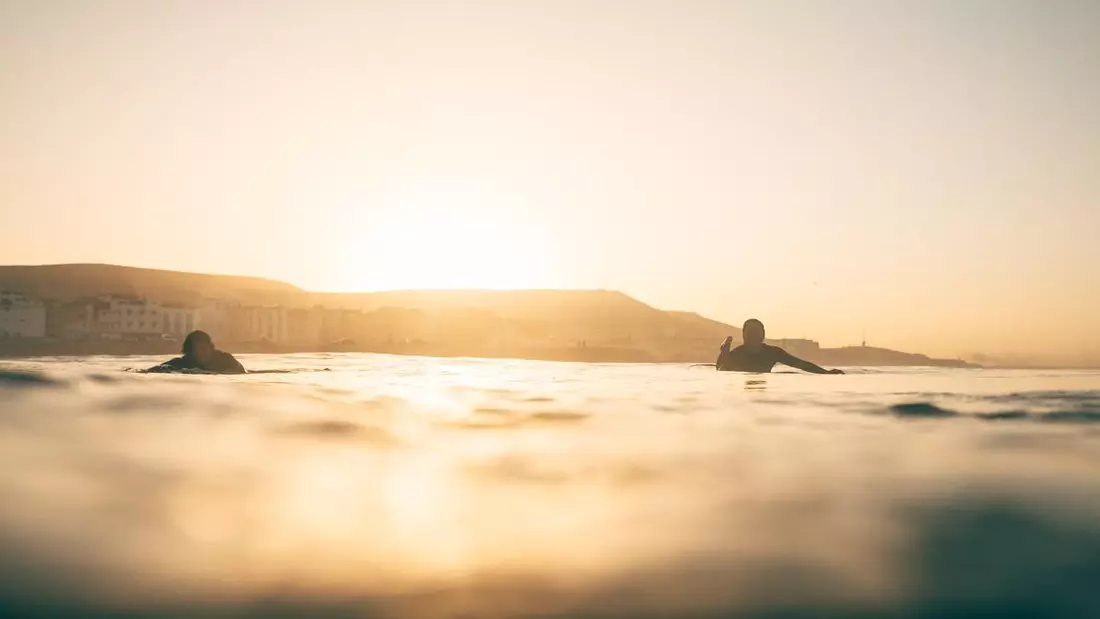
Surf Holiday in Morocco
Your First Surf Trip: How to Benefit as a Beginner from a Surf Camp in Morocco
Your first surf trip is something truly special – especially when it takes you to the sunny Atlantic coast of Morocco. In the towns of Aourir and Tamraght, north of Agadir, you’ll find not only laid-back beach vibes but also ideal conditions to learn surfing from scratch. This is where some of the most popular surf camps for beginners are located – nestled between Banana Point, Devil’s Rock, and other beginner-friendly breaks.
What makes a surf camp in Aourir or Tamraght so special:
- The right spots right on your doorstep: Gentle beach breaks, sheltered bays, and consistent conditions – perfect for quick progress.
- Everything from one source: Accommodation, surf lessons, equipment, and spot transfers – you don’t have to worry about anything and can fully focus on surfing.
- Community and vibe: You’ll live under one roof with other beginners and advanced surfers, enjoy sunsets on the rooftop terrace, share stories, and grow a little more every day – even outside the water.
- More than just waves: In your free time, you can explore local markets, practice yoga, or recharge your batteries at a Moroccan tagine evening.
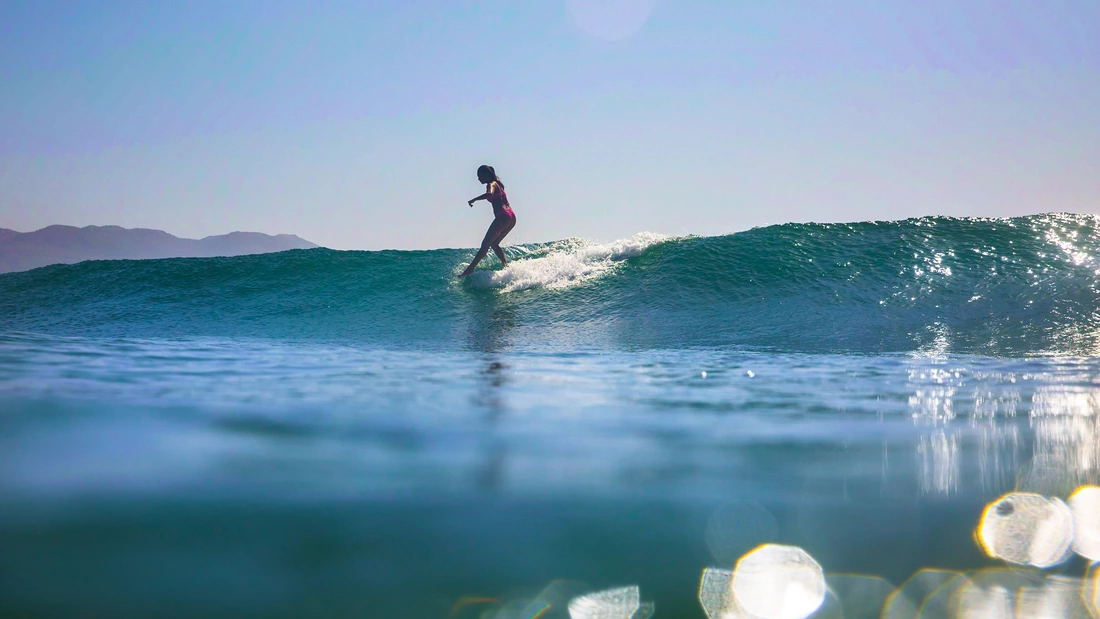
Learn to Surf
Surf Camps in Morocco: Riding the Waves between Aourir & Tamraght
Ready to get started? – In Aourir and Tamraght – two charming coastal towns north of Agadir – our handpicked surf camps are waiting for you. Watch the waves from the rooftop terrace, learn to surf together, and experience the real Morocco: here you’ll find everything that makes for an unforgettable surf holiday.
Travel Information
Getting to Morocco – How to Arrive at Your Surf Camp Relaxed
The most convenient way to reach the Moroccan Atlantic coast is a direct flight to Agadir. The airport is only about 45 minutes from the surf spots in Aourir, Tamraght, or Taghazout – perfect for a quick start to your surf holiday. From the airport, you can easily reach your surf camp by taxi, rental car, or an organized shuttle.
Alternative: Flight to Marrakech
Flights to Marrakech are often cheaper. And the best part: you can combine your surf trip with a short city stop. From Marrakech, you can reach the coast in around 3–4 hours by coach. Tickets cost about €7–15 and can be conveniently booked online. Ideal if you want to travel on a budget and enjoy some sightseeing along the way.
Our recommendation:
For maximum freedom and to explore the region’s surf spots independently, a rental car is worth it – especially if you also want to visit Imsouane or remote bays away from the main hotspots. At our Pure Surfcamps Morocco, we’re also happy to arrange an airport transfer for you – whether from Agadir or Marrakech.
Pure Blog
Discover more surf spots in our surf guides
Foto Credits
© CreTours – stock.adobe.com, File-No.: 591116456
© sewu – stock.adobe.com, File-No.: 106404363
